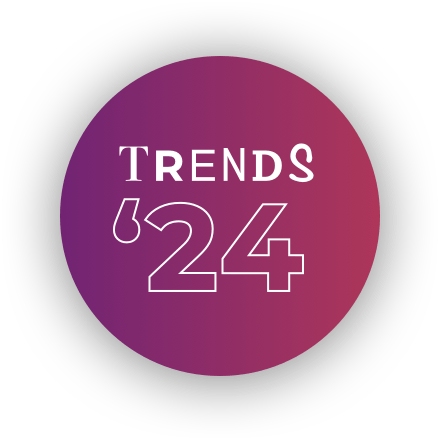What’s that sound? Everybody look what’s going down
If your CEO asked you how your colleagues across the organisation are feeling right now about communication, a change programme, or any other crucial business topic, would you be able to answer confidently? Would you have the evidence to back up your conversation, or would you be relying on a hunch? If it’s the latter, take a moment to stop and listen to what’s around you.
Not long after the world had started to open up again after the Covid lockdowns, we found ourselves running a series of focus groups for a new client organisation of ours.
These sessions were part of a detailed internal communications audit, designed to assess what would be needed in this ‘new world’. The first few sessions went well – we pulled out plenty of valuable insight that would help us in our thinking and in putting together some recommendations for our client.
But then, in one post-lunch session, the mood changed. If you’ve run focus groups yourself, you’ll recognise the image straight away: an attendee with a face like thunder; arms crossed; and very, very grumpy.
We’ve found that at times like this it’s best to approach the elephant in the room and confront it head on, so we asked our grumpy attendee if there was anything he would like to share.
And there was.
Quite a bit in fact.
It turned out that – unsurprisingly – he really didn’t want to be there. His manager had told him he had to join the session, and he wasn’t best pleased about it.
But he wasn’t upset because he was too busy, or had somewhere else to be.
It was because he’d taken part in a previous round of focus groups a couple of years previously (well before we got involved) and, as he told us: “I gave my time – I travelled to the session, shared my ideas, and offered my opinion. But after that: nothing. I didn’t get a thank you; I didn’t hear anything about what other people had said; and nothing ever changed. So what’s the point in me being here now?”
We share this story for a couple of reasons. One, that it’s good therapy for us. But, much more importantly, to make the point that there’s a big difference between ‘listening’ and ‘really listening’.

“Having a voice at work can make a fundamental difference to people's working lives and can help build better relationships between employers and their workforce. Wellbeing, commitment and innovation are negatively impacted when employees feel they are without ‘voice’ in their organisation.”


“Viva Engage is a platform that enables all employees to communicate – also the critical voices. We get an opportunity to go into dialogue and address concerns.”


Embracing the unknown
You can’t just go through the motions when it comes to giving your colleagues a voice. There’s no point running a survey, holding focus groups, or having ‘listening sessions’ if you don’t actually use the information you’ve gathered.
That point was reinforced in the IoIC’s IC Index, which found that less than half of people say their employer shows how feedback is used to inform action.
Occasionally it feels to us that some IC teams follow the old lawyer’s adage of: “Never ask a witness a question you don’t already know the answer to.”
If they know their intranet is hopeless and desperately in need of an upgrade, they’re only too happy to ask for their colleagues’ opinions, knowing that the answers will help them to build a business case.
But for something where the answer is unpredictable, there’s less enthusiasm for giving employees a voice. Or if the feedback isn’t something they agree with, then it gets swept under the carpet and isn’t mentioned again. Which creates a new issue of “I told you what I think and you ignored me; I’m not going to waste my time again.”
Of course, not every idea from an employee is going to be gold standard. You can’t – and shouldn’t – implement every one. But when you go back to someone to explain why an idea isn’t moving forward (perhaps it’s too expensive, or there isn’t the resource to implement it) they’ll usually appreciate the explanation, and the fact that you at least considered the idea seriously.
All of this gets to the core value of measurement: building a 3D picture of what’s working well and what can be improved. And if you don’t know, or acknowledge, where the problems are, how can you begin to fix them?
The world is changing so fast these days that we need to get out in front of minor issues before they become bigger problems. And, thanks to digital technologies, in some ways it’s getting easier to do that.
If you have an internal social platform like Viva Engage or Workplace, you already have a window into how your colleagues are feeling. Of course, you need an open culture in which people are encouraged to use those platforms for noting problems and / or sharing ideas, but in theory the information is ‘out there’ in public.
As Freja Hededal Christiansen from Vestas said in the recent SWOOP Viva Engage Festival: “Viva Engage is a platform that enables all employees to communicate – also the critical voices. We get an opportunity to go into dialogue and address concerns… those people are going to be critical anyway, but at least if it’s out in the open then we can listen and join the conversation.”
Or, to put it in a more direct way, here’s a memorable phrase we heard a few years ago: “It’s better to be punched in the face in the office than stabbed in the back in the pub.”
Embracing the unknown

Shape the culture you need.
Giving employees a voice is not just about running measurement activities. Work with senior leaders to develop a culture where people are encouraged to speak up, to share their ideas, to identify problems that need to be fixed. You can incentivise conversation too, through innovation contests.

Develop your line manager community.

Report back to build trust.
Getting sentimental
As well as manually browsing and searching your platform, you can also use premium features within Viva Engage to bring trends to the surface. As part of the Audience Analytics hub, sentiment analysis helps leaders and their teams understand the types of conversations happening in near real-time, as well as where, when, and how leaders might best connect with their audiences.
As AI revolutionises the way we work, you can be confident too that we’ll see more of this type of sentiment analysis in all digital platforms, helping us to understand ‘the mood’ of teams and wider organisations.
But, for now, there are plenty of other ways in which you can build a more defined picture of sentiment in your business.
- Regular measurement is the most common approach – short, sharp pulse surveys to assess attitudes towards key topics.
- Many organisations build in a less frequent ‘deep dive’ too – usually once every couple of years, to investigate sentiment in more detail, and particularly to help shape communication strategy.
- If you’re using Microsoft 365, the Viva Insights app can give you aggregated (and anonymised) information about behaviours in your organisation. For instance, is there a culture of long hours, with people regularly working early or late? Do you have an unhealthy relationship with meetings? How are things looking from a wellbeing or productivity perspective?
- Employee networks and / or employee forums are becoming more commonplace – bringing together representatives from around an organisation to help communicate outwards, and bring in feedback from the front line.
- You could also put together a smaller panel of colleagues who can make regular ‘diary entries’ to log their thoughts, attitudes and ideas.

“As part of the Audience Analytics hub, sentiment analysis helps leaders and their teams understand the types of conversations happening in near real-time.”

